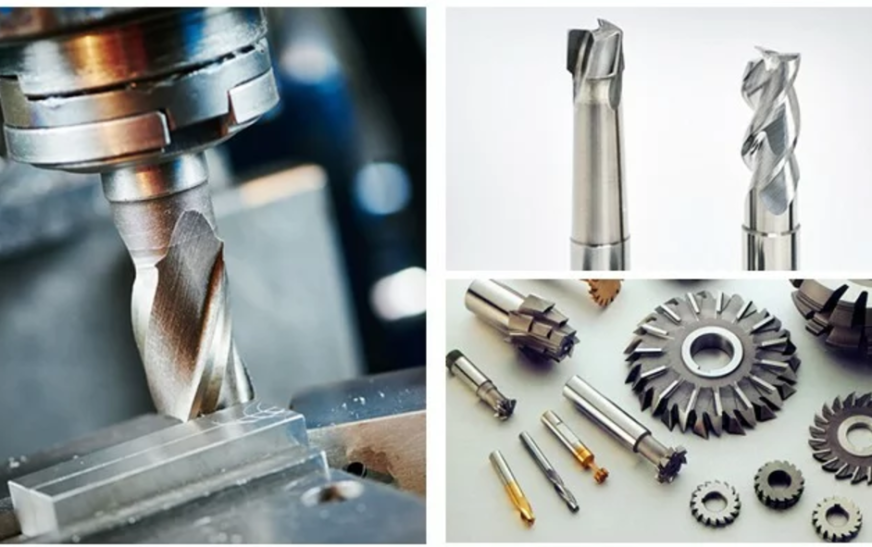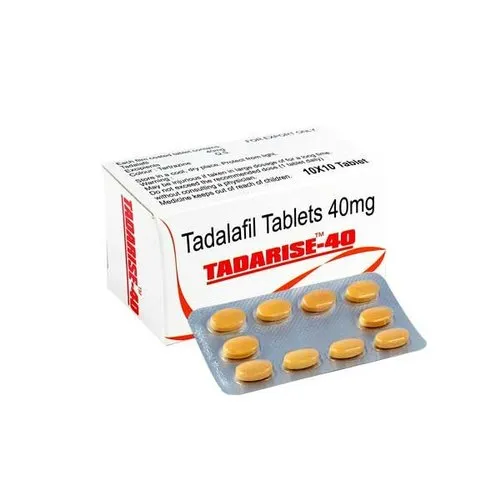Milling cutters are essential tools used in the milling process to remove material from a workpiece by advancing a cutter into the workpiece, typically in a rotary motion. These tools are indispensable in machining operations for industries like aerospace, automotive, and manufacturing. Different types of milling cutters are available for various milling operations, each with its specific use, geometry, and features. This article explores the various Milling Cutter Types, their functions, and the factors to consider when choosing the appropriate cutter for your machining needs.
Introduction to Milling Cutters
Milling is a machining process where material is removed from a workpiece using rotary cutters. The cutting tool, known as a milling cutter, rotates and moves across the material to create the desired shape or finish. Milling cutters come in a wide range of types, each suited for different operations, such as face milling, end milling, or slot milling.
Milling cutters can be made from a variety of materials like high-speed steel (HSS), carbide, or ceramic, and they can vary in size, shape, and design depending on the type of milling operation. The choice of cutter directly affects the quality of the finished part, the tool’s longevity, and the efficiency of the milling process.
Types of Milling Cutters
1. End Mill Cutters
End mill cutters are one of the most common types of milling cutters, known for their versatility. They are primarily used for vertical milling, where the cutter moves along the vertical axis of the machine. These cutters have cutting edges on both the end face and the sides, making them suitable for a wide range of operations, including slot cutting, side milling, and face milling.
Types of End Mills:
- Flat End Mills: Used for general-purpose milling. They cut with the flat end of the tool and can create flat-bottomed grooves or slots.
- Ball Nose End Mills: These cutters have a rounded end and are ideal for producing curved or contoured surfaces, making them useful in 3D machining and mold making.
- Corner Radius End Mills: These have a small radius on the tip, which reduces the stress concentration during cutting, providing smoother finishes and longer tool life.
Applications:
- Cutting slots and grooves
- Contouring and profiling
- Drilling and plunging operations
2. Face Mills
Face mills are large-diameter cutters designed for face milling operations, where the cutter is mounted perpendicular to the workpiece. These cutters have teeth around the perimeter, with the majority of the cutting action occurring at the face of the cutter. Face mills are used for high-speed, high-precision material removal, providing excellent surface finishes.
Features:
- Multiple Inserts: Face mills typically have interchangeable inserts or teeth that allow for easy replacement and adjustment to suit different materials and cutting conditions.
- Large Cutting Diameter: The diameter of the cutter typically ranges from a few inches to several feet, depending on the application.
Applications:
- High-speed material removal
- Producing smooth, flat surfaces
- Facing large parts and components
3. Slotting Cutters
Milling Cutter Types, also known as slitting saws, are used to cut deep slots into the material. These cutters are thin with teeth located along the outer edge, allowing for precise cutting of narrow, deep slots. Slotting cutters are available in both solid and insertable forms, depending on the application.
Features:
- Thin Blade: The blade’s thickness helps in making narrow, precise cuts.
- Multiple Teeth: The teeth along the cutter’s edge ensure efficient material removal while maintaining a smooth finish.
Applications:
- Cutting grooves, slots, and keyways
- Sawing operations where a precise, narrow cut is required
4. Woodruff Cutters
Woodruff cutters are specialized milling cutters used for cutting keyways in shafts or parts that require a specific, precise shape. These cutters have a cylindrical shape and are used in the manufacture of parts that need a keyway to accommodate a key for securing gears or pulleys to a shaft.
Features:
- Cylindrical Design: The design of the cutter ensures precise cuts and alignment in keyway applications.
- High-Precision Cutting: Woodruff cutters are made for high-precision work, ensuring tight tolerances in keyway design.
Applications:
- Cutting keyways in shafts and pulleys
- Manufacturing gears, sprockets, and mechanical linkages
5. Roughing End Mills
Roughing end mills are used for high-speed material removal, typically in the initial stages of machining. These cutters are designed to remove large amounts of material quickly and are often used when working with tough materials that require heavy cutting. Roughing end mills have serrated teeth that reduce the cutting force and heat generation.
Features:
- Serrated Teeth: These teeth help in breaking up chips, allowing for efficient material removal without overloading the cutter.
- High Material Removal Rate: Roughing mills can remove significant amounts of material in a short period, making them suitable for pre-finishing operations.
Applications:
- Removing large quantities of material
- Pre-finishing operations in complex geometries
- High-speed milling of tough materials
6. T-Slot Cutters
T-slot cutters are designed to cut T-shaped slots in a workpiece. These slots are often used to allow the insertion of bolts or for other mechanical purposes. The T-slot cutter has a broad, flat body with a deep, narrow cutting edge at the center, creating the characteristic T-shape slot.
Features:
- T-Shape Design: The cutting edges are designed to form the slot’s cross-section.
- Multiple Teeth: The tool features multiple teeth for efficient and precise cutting.
Applications:
- Cutting T-slots for mechanical assembly
- Slotting for use with bolts and fasteners in machine design
7. Chamfer Cutters
Chamfer cutters are used to cut a beveled edge on the workpiece, typically at a 45-degree angle. This cutter is essential for finishing operations where a sharp edge needs to be smoothed or eliminated for both functional and aesthetic reasons.
Features:
- Beveled Cutting Edges: Chamfer cutters have angled edges designed for creating smooth bevels or chamfers.
- Small Diameter: These cutters are typically smaller in diameter than other types, allowing for precise edge finishing.
Applications:
- Finishing edges to remove sharp corners
- Preparing parts for assembly or welding
- Aesthetic applications in product design
8. Angle Cutters
Angle cutters are used for cutting angles into workpieces. They have an angled edge that allows for the precise formation of angled features such as V-shaped grooves or chamfers. These cutters are commonly used in machining operations where precise angular cuts are required.
Features:
- Precise Angular Cut: Angle cutters are designed to form specific angles in workpieces.
- Versatility: Can be used for a variety of angle cutting applications, from simple bevels to complex profiles.
Applications:
- Cutting precise angles in workpieces
- Grooving and slitting at specific angles
- Producing angular features for parts in mechanical assemblies
Factors to Consider When Choosing Milling Cutters
Choosing the right Milling Cutter Types is critical for ensuring optimal performance, surface finish, and tool life. Here are some key factors to consider when selecting a milling cutter:
1. Material of the Workpiece
Different materials require different cutters. For example, hard metals such as titanium or high-strength alloys may require carbide or ceramic cutters, while softer materials like aluminum or brass can be effectively machined with high-speed steel (HSS) cutters.
2. Cutting Speed and Feed Rate
The cutting speed and feed rate can significantly affect the milling operation’s efficiency and surface quality. High-speed cutters, like carbide end mills, are ideal for rapid material removal, while HSS tools may be better for slower, more controlled cutting.
3. Type of Milling Operation
The specific milling operation you’re performing will also impact the choice of cutter. For example, face mills are ideal for flat surfaces, while end mills are more suited for three-dimensional shapes and contouring.
4. Tool Material and Coating
The material and coating of the milling cutter affect its performance and lifespan. Coatings like TiN (Titanium Nitride) or TiAlN (Titanium Aluminum Nitride) can improve the cutter’s wear resistance and performance in high-temperature operations.
Applications of Milling Cutters
Milling cutters are used in a wide range of industries, including:
1. Automotive Industry
In automotive manufacturing, milling cutters are used to produce high-precision parts such as engine components, transmission parts, and custom tooling.
2. Aerospace Industry
In aerospace, milling cutters are used to manufacture components like turbine blades, aircraft frames, and landing gears, all requiring high precision and the ability to machine tough, heat-resistant materials.
3. Tooling and Mold Making
Milling cutters are used extensively in mold making, where precision and accuracy are crucial for producing complex mold shapes used in injection molding and casting.
Conclusion
Milling Cutter Types are an essential part of the machining process, providing the means to shape, cut, and finish materials to precise specifications. With various types of milling cutters available for different applications, choosing the right tool for the job is crucial for achieving the desired results. Whether you’re working in automotive, aerospace, or general manufacturing, understanding the different types of milling cutters and their applications is key to enhancing productivity and ensuring the quality of your finished parts.






